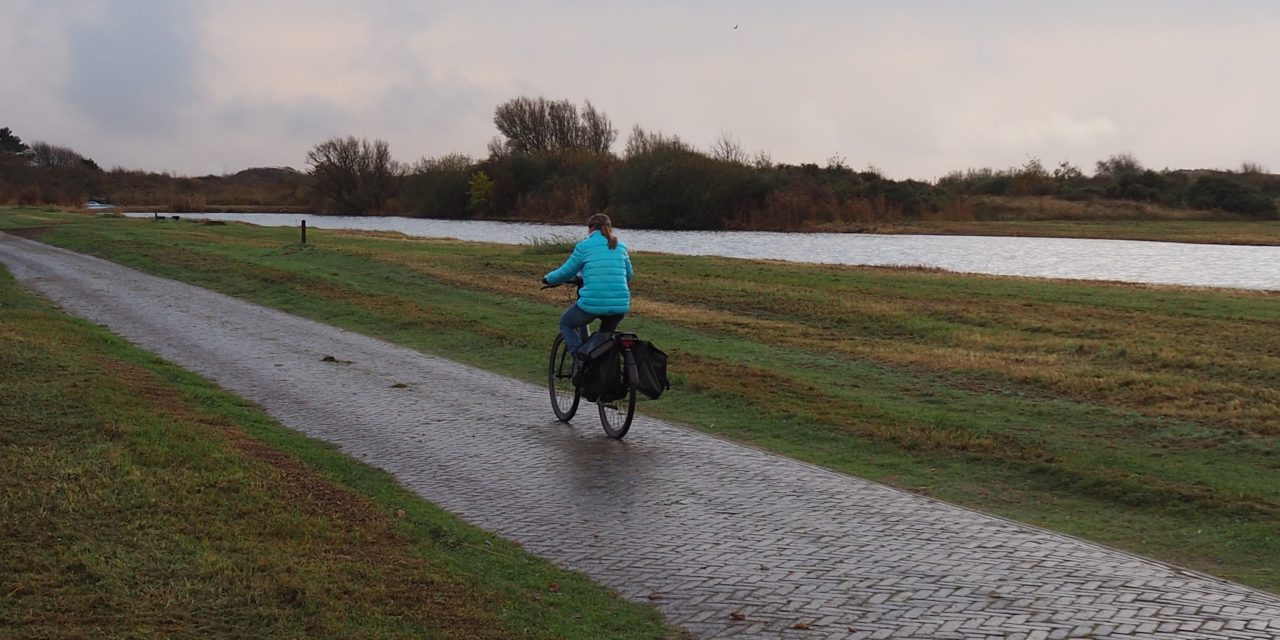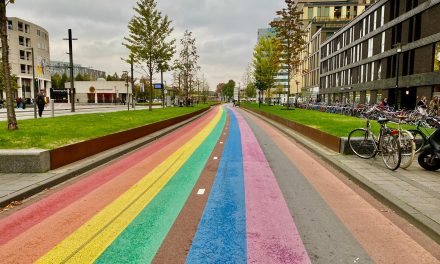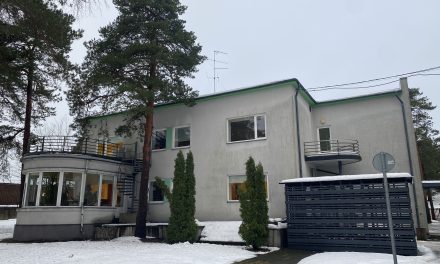Only about one-third of Europe’s surface water is classified as being in good condition, according to the latest 2024 report from the European Environment Agency (EEA). Despite an EU target to achieve good water quality for all water bodies by 2015, later extended to 2027, progress has remained stagnant. As Wetlands International Europe highlighted, “Healthy water ecosystems are essential for biodiversity and resilience, but we are far from achieving this across Europe.”
What Does Water Quality Mean?
Water quality refers to the condition of both surface and groundwater, determined by various physical, chemical, and biological characteristics. Healthy water is essential for ecosystems and human use, as it supports biodiversity, provides drinking water, and enables agriculture and recreation. However, water becomes unsafe when polluted with harmful substances such as chemicals and nutrients, negatively affecting both nature and human health.
As Irene Duque from Wetlands International Europe explains, “The pressure on water quality is immense, with contaminants constantly being introduced through human activities, especially agriculture.” This highlights the constant threat to water quality in Europe.
Addressing the Challenge: Buffer Zones and Natural Solutions
Agricultural pollution, particularly from pesticides and fertilizers, is a major concern. One solution involves creating buffer zones along water bodies to filter out pollutants before they reach the water. These natural water purification methods are being implemented to reduce contamination and improve water quality. This is explained in the audio, with examples of how such solutions are being used on the ground.
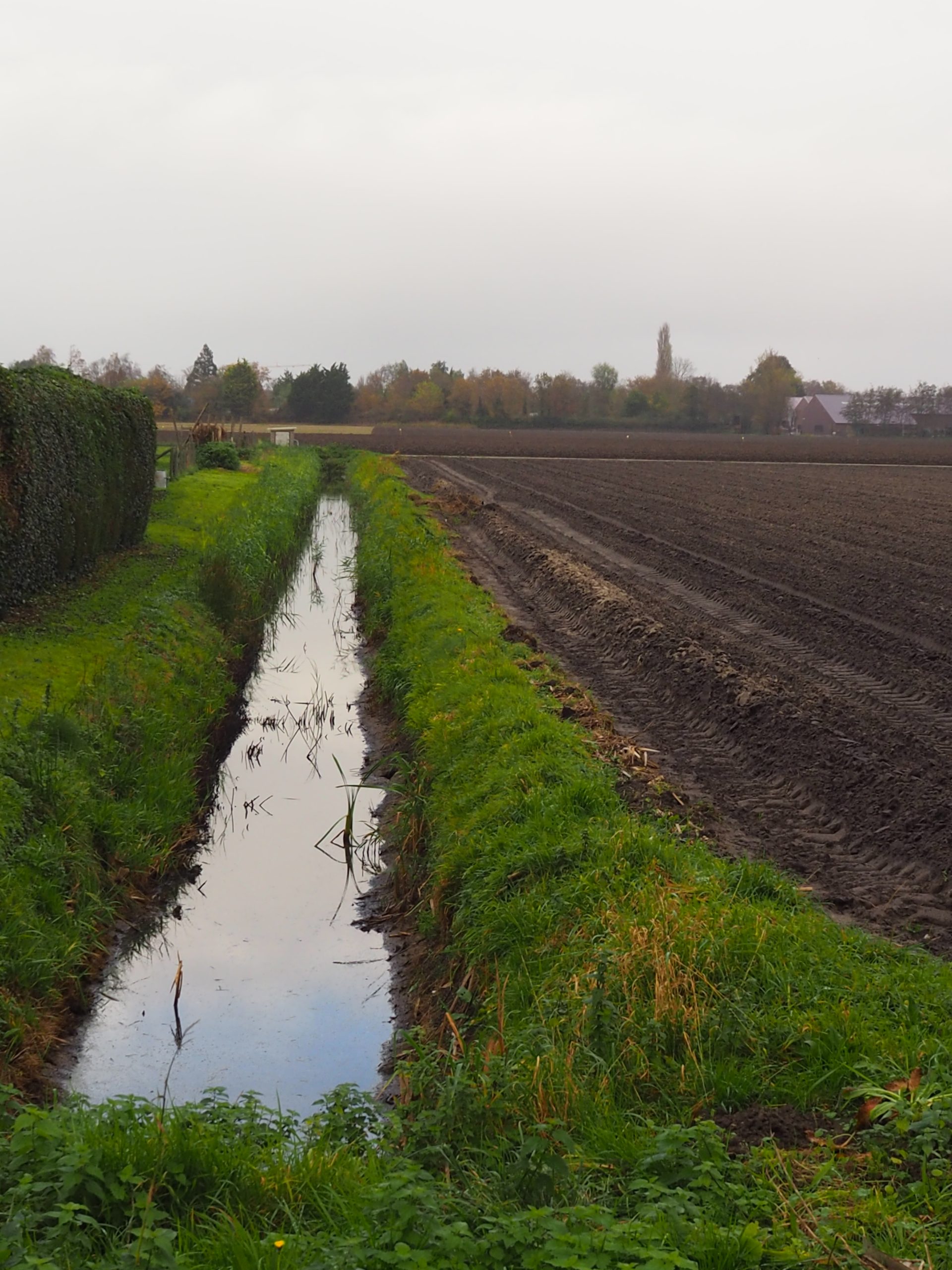
(Water runoff flowing alongside a farming field) – Bart Koomen.
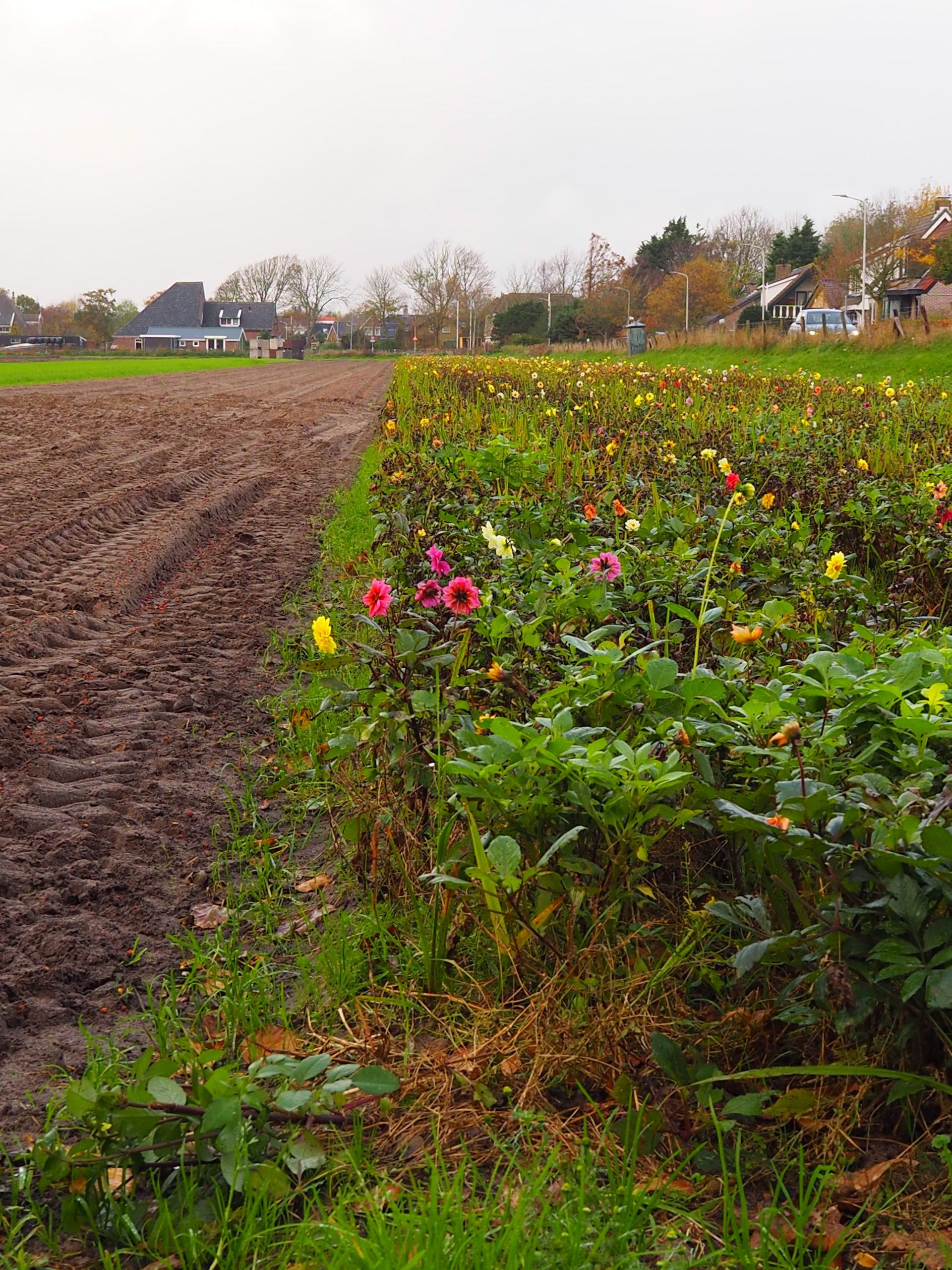
(Buffer zone alongside a farming field) – Bart Koomen
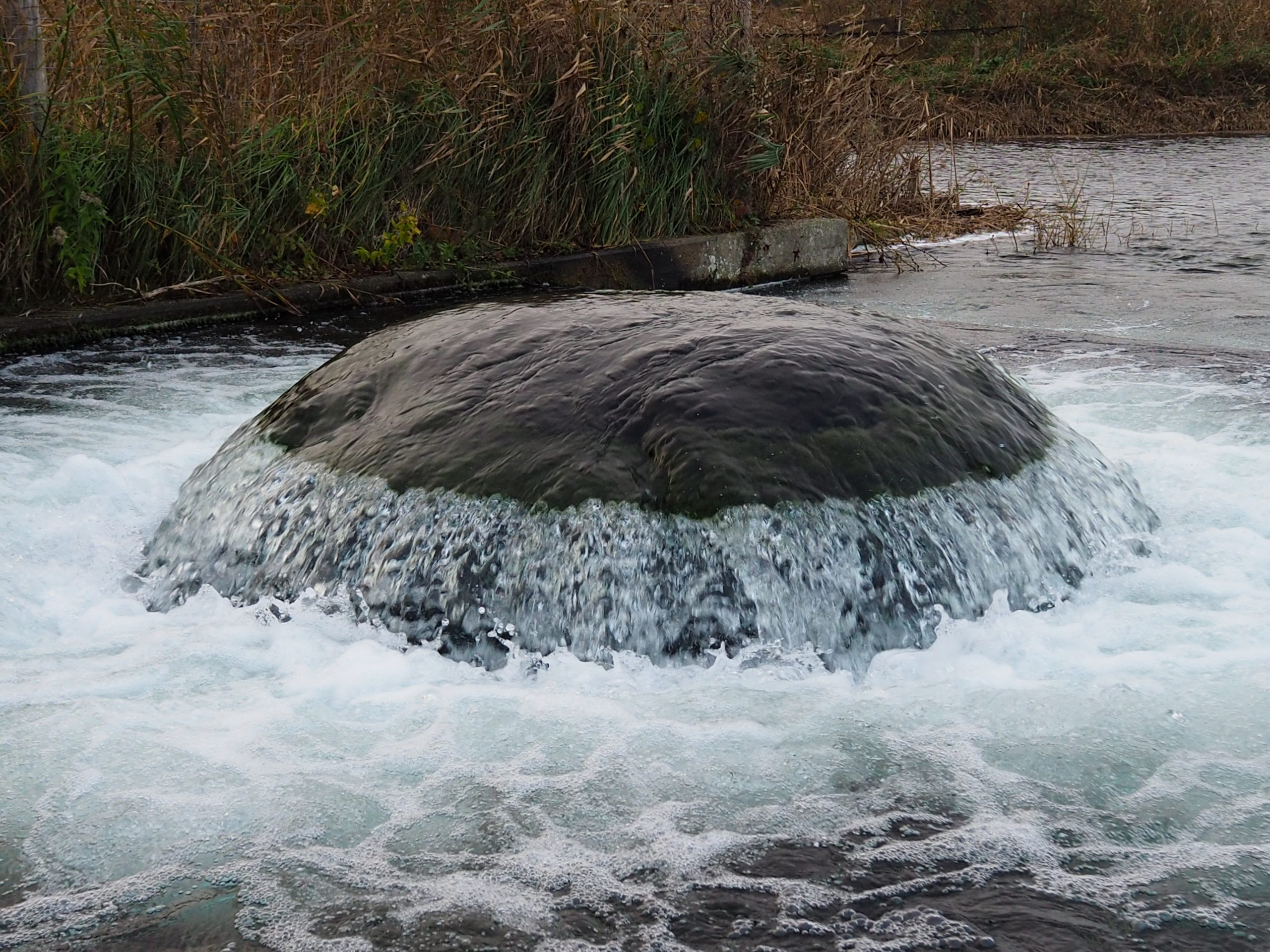
(The Jellyfish Natural Purification Site) – Bart Koomen
one-in, one-out
Jos Verstraten, a dairy farmer and board member of LTO Nederland, criticized certain regulatory approaches, including the “one-in, one-out” rule, which requires that if one pollutant is reduced, another must be removed. Verstraten stated, “It’s a flawed system. The one-in, one-out approach is a shortcut, not a solution. It doesn’t address the systemic issues that are causing the pollution, especially in agriculture.” This illustrates the challenges of addressing water quality with superficial regulations that fail to tackle the root causes of pollution.
The Effects of Poor Water Quality
Poor water quality can lead to several harmful effects on ecosystems. According to Paul van den Brink, professor of ecotoxicology at Wageningen University, chemicals such as nitrogen, phosphorus, and pesticides contribute to water pollution, which can disrupt aquatic ecosystems. When nutrient levels in water rise, it can trigger algae blooms. As algae die and decompose, they consume large amounts of oxygen, creating low-oxygen conditions that harm aquatic life.
Van den Brink further explained that agricultural runoff is a key driver of nutrient pollution, which can deplete oxygen levels in water. He pointed out that farming is responsible for about 40% of water pollution in Europe, making it the largest contributing factor, according to the European Environment Agency (EEA). As an example, he mentioned how insecticides commonly used in agriculture harm aquatic invertebrates like water fleas, which are crucial to the food web. “The loss of these species disrupts the balance of the ecosystem,” he said.
The Challenge for Farmers
For farmers, reaching water quality targets is a significant challenge. Jos Verstraten emphasized that improving water quality will require costly changes. “If we want to drastically reduce the runoff of nutrients like nitrogen and phosphorus, it will require changes that most farmers simply cannot afford,” he explained. Farmers are already working within tight financial margins, and the costs associated with implementing new practices to meet environmental goals could push them beyond their limits. “Farmers are burdened by regulations requiring significant investments in sustainability,” Verstraten noted, adding that improving water quality would come at a high cost.
Verstraten also speculated that the public’s willingness to support these environmental improvements would shrink if it led to higher food prices. “When food prices rose during the Ukraine crisis, the public reacted negatively. If improving water quality results in higher prices, the same backlash could happen,” Verstraten said.
However, Wetlands International, represented by Irene Duque, underscores the urgency of addressing agricultural runoff for the sake of Europe’s water ecosystems. According to Duque, the agriculture sector is responsible for around 40% of water pollution, making substantial changes necessary. “If we don’t act soon, we will continue to see the degradation of our water bodies, which will have irreversible consequences on biodiversity and water availability,” Duque warned. She emphasized that urgent action is needed, as the situation is already dire. “The systems we have in place now are not enough. Our current model is unsustainable, and if we don’t change it soon, we’ll reach a point of no return,” Duque added.
